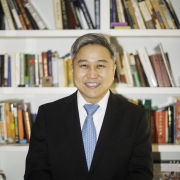As a Citation Laureate, Penn Physicist Contender for Nobel Prize
Charles Kane, Class of 1965 Term Professor of Physics and Astronomy, is one of this year’s Thomson Reuters Citation Laureates. The honor is designed to recognize researchers whose body of work puts them in contention for a Nobel Prize. Kane, along with Laurens W. Molenkamp of the University of Würzburg and Shoucheng Zhang of Stanford University, are named in physics for their research on the quantum spin Hall effect and topological insulators.
The 2014 Nobel Prize in Physics will be announced on Tuesday, October 7.
Read the full story here.





